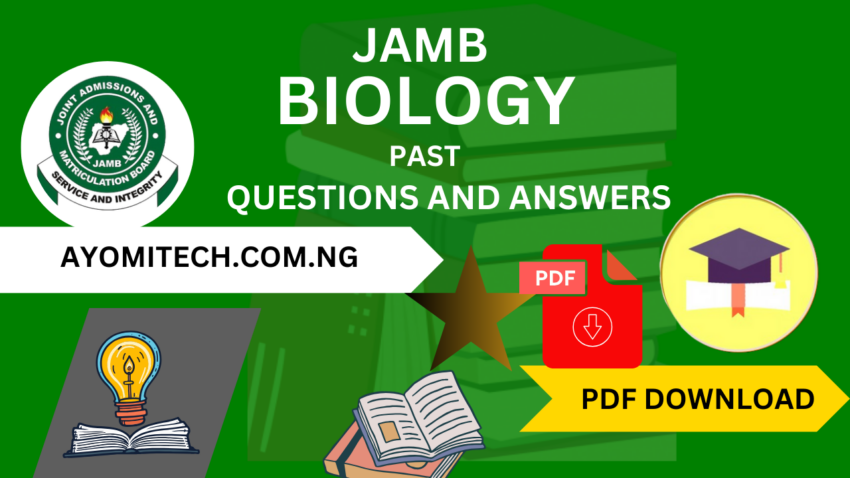
JAMB Biology past questions and Answers pdf updated
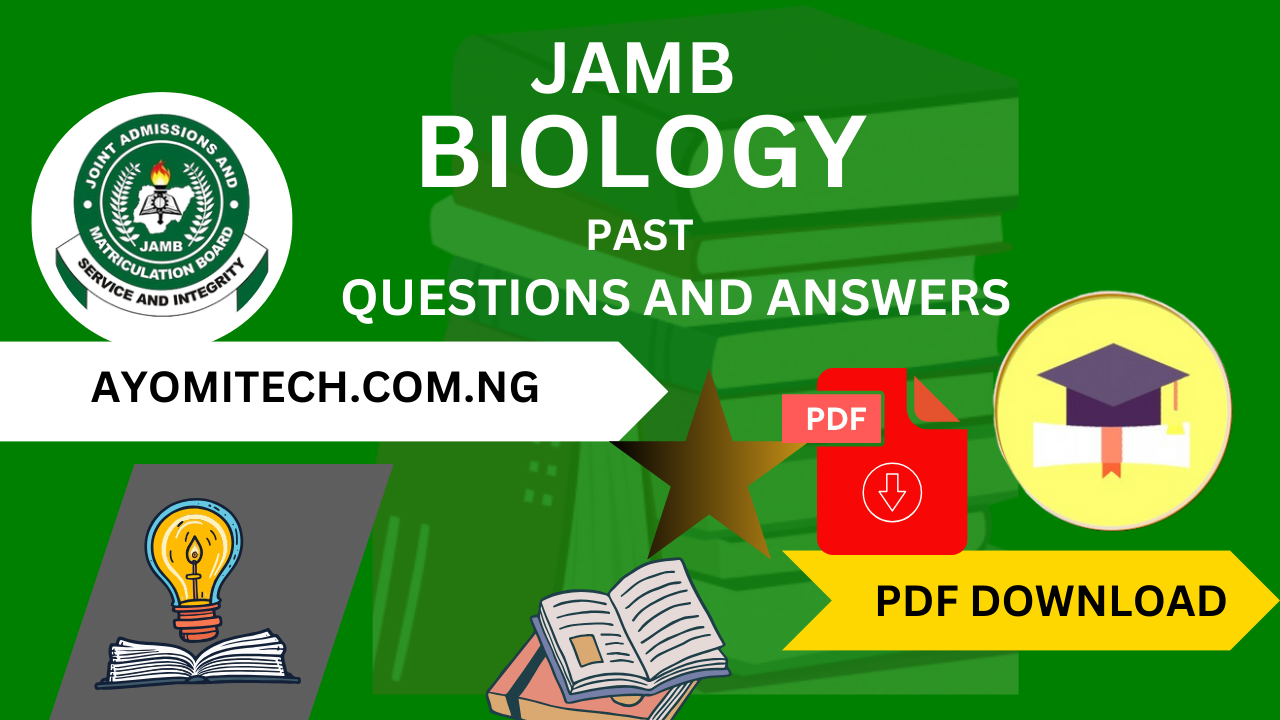
INTRODUCTION
You currently need to get ready for the JAMB Biology examination. JAMB Biology past questions and answers should be your starting point for high-score achievement because the timing is right now to begin practicing for the upcoming exam. Past questions and answers offer students access to essential insights about examination structure alongside typical questions and expected responses.
This guide includes complete information about JAMB Biology past questions with their structure along with successful preparation methods.
The article provides complete access to JAMB Biology past questions along with their answers in PDF format while offering guidelines for maximizing their effectiveness during preparation.
In below pdf includes complete JAMB Biology past questions and Answers pdf updated (1983-2024)
JAMB Biology past questions and answers pdf for free reading
JAMB(UTME) 2024 BIOLOGY QUESTIONS
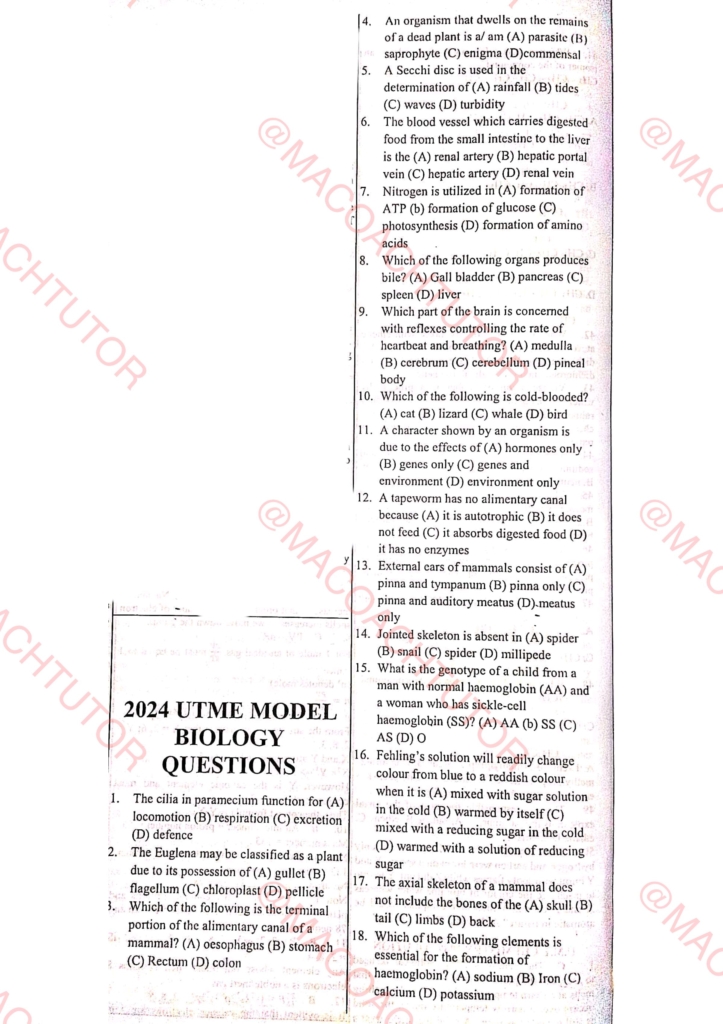
- The cilia in paramecium function for
(A) locomotion
(B) respiration
(C) excretion
(D) defence
2. The Euglena may be classified as a plant due to its possession of
(A) gullet
(B) flagellum
(C) chloroplast
(D) pellicle
3. Which of the following is the terminal portion of the alimentary canal of a mammal?
(A) esophagus
(B) stomach
(C) rectum
(D) colon
4. An organism that dwells on the remains of a dead plant is a/an
(A) parasite
(B) saprophyte
(C) enigma
(D) commensal
5. A Secchi disc is used in the determination of
(A) rainfall
(B) tides
(C) waves
(D) turbidity
6. The blood vessel which carries digested food from the small intestine to the liver is the
(A) renal artery
(B) hepatic portal vein
(C) hepatic artery
(D) renal vein
7. Nitrogen is utilized in
(A) formation of ATP
(B) formation of glucose
(C) photosynthesis
(D) formation of amino acids
8. Which of the following organs produces bile?
(A) Gall bladder
(B) pancreas
(C) spleen
(D) liver
9. Which part of the brain is concerned with reflexes controlling the rate of heartbeat and breathing?
(A) medulla
(B) cerebrum
(C) cerebellum
(D) pineal body
10. Which of the following is cold-blooded?
(A) cat
(B) lizard
(C) whale
(D) bird
11. A character shown by an organism is due to the effects of
(A) hormones only
(B) genes only
(C) genes and environment
(D) environment only
12. A tapeworm has no alimentary canal because
(A) it is autotrophic
(B) it does not feed
(C) it absorbs digested food
(D) it has no enzymes
13. External ears of mammals consist of
(A) pinna and tympanum
(B) pinna only
(C) pinna and auditory meatus
(D) meatus only
14. Jointed skeleton is absent in
(A) spider
(B) snail
(C) spider
(D) millipede
15. What is the genotype of a child from a man with normal haemoglobin (AA) and a woman who has sickle-cell haemoglobin (SS)?
(A) AA
(B) SS
(C) AS
(D) O
16. Fehling’s solution will readily change colour from blue to a reddish colour when it is
(A) mixed with sugar solution in the cold
(B) warmed by itself
(C) mixed with a reducing sugar in the cold
(D) warmed with a solution of reducing sugar
17. The axial skeleton of a mammal does not include the bones of the
(A) skull
(B) tail
(C) limbs
(D) back
18. Which of the following elements is essential for the formation of haemoglobin?
(A) sodium
(B) iron
(C) calcium
(D) potassium
JAMB(UTME) 2023 BIOLOGY QUESTIONS
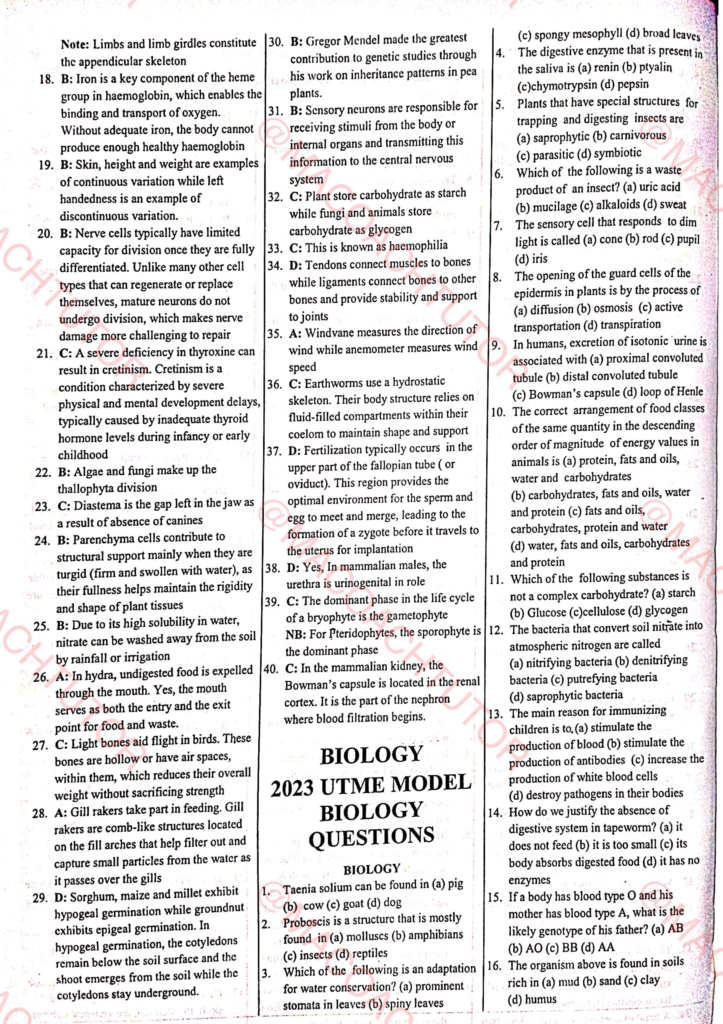
- Taenia solium can be found in
(a) pig
(b) cow
(c) goat
(d) dog
2. Proboscis is a structure that is mostly found in
(a) molluscs
(b) amphibians
(c) insects
(d) reptiles
3. Which of the following is an adaptation for water conservation?
(a) prominent stomata in leaves
(b) spiny leaves
(c) spongy mesophyll
(d) broad leaves
4. The digestive enzyme that is present in the saliva is
(a) renin
(b) ptyalin
(c) chymotrypsin
(d) pepsin
5. Plants that have special structures for trapping and digesting insects are
(a) saprophytic
(b) carnivorous
(c) parasitic
(d) symbiotic
6. Which of the following is a waste product of an insect?
(a) uric acid
(b) mucilage
(c) alkaloids
(d) sweat
7. The sensory cell that responds to dim light is called
(a) cone
(b) rod
(c) pupil
(d) iris
8. The opening of the guard cells of the epidermis in plants is by the process of
(a) diffusion
(b) osmosis
(c) active transportation
(d) transpiration
9. In humans, excretion of isotonic urine is associated with
(a) proximal convoluted tubule
(b) distal convoluted tubule
(c) Bowman’s capsule
(d) loop of Henle
READ MORE In the PDF below
1983-2024 JAMB Biology Past Questions and Answers pdf objective for Free Reading
JAMB-Biology-past-Questions-and-Answers-1983-2024How to Get the Best Results from JAMB Biology Past Questions and Answers
The following effective rules will help you maximize the value of JAMB Biology past questions:
- It is better to begin studying early instead of cramping your education at the very end. The early start of your revision provides you with enough time to conduct comprehensive practices along with reviews.
- Get used to timed practice to master time management skills and master the actual test environment.
- When checking your answers be sure to assess both your wrong answers and correct solutions.
- Spend additional time specifically on difficult subjects so you achieve a comprehensive understanding of the concepts and master the problems associated with those subjects.
- The formatting of your exam answers should match official expectations because it will improve both accuracy and readability.
When you employ this plan your scores will increase along with your success rate in the JAMB Biology exam.
you can download the past questions and answers on our selar page
ALSO READ: EXAM’s Past Questions and Answers




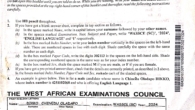
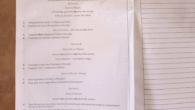


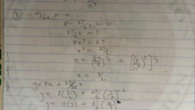
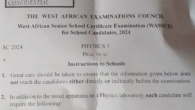


Leave a Reply